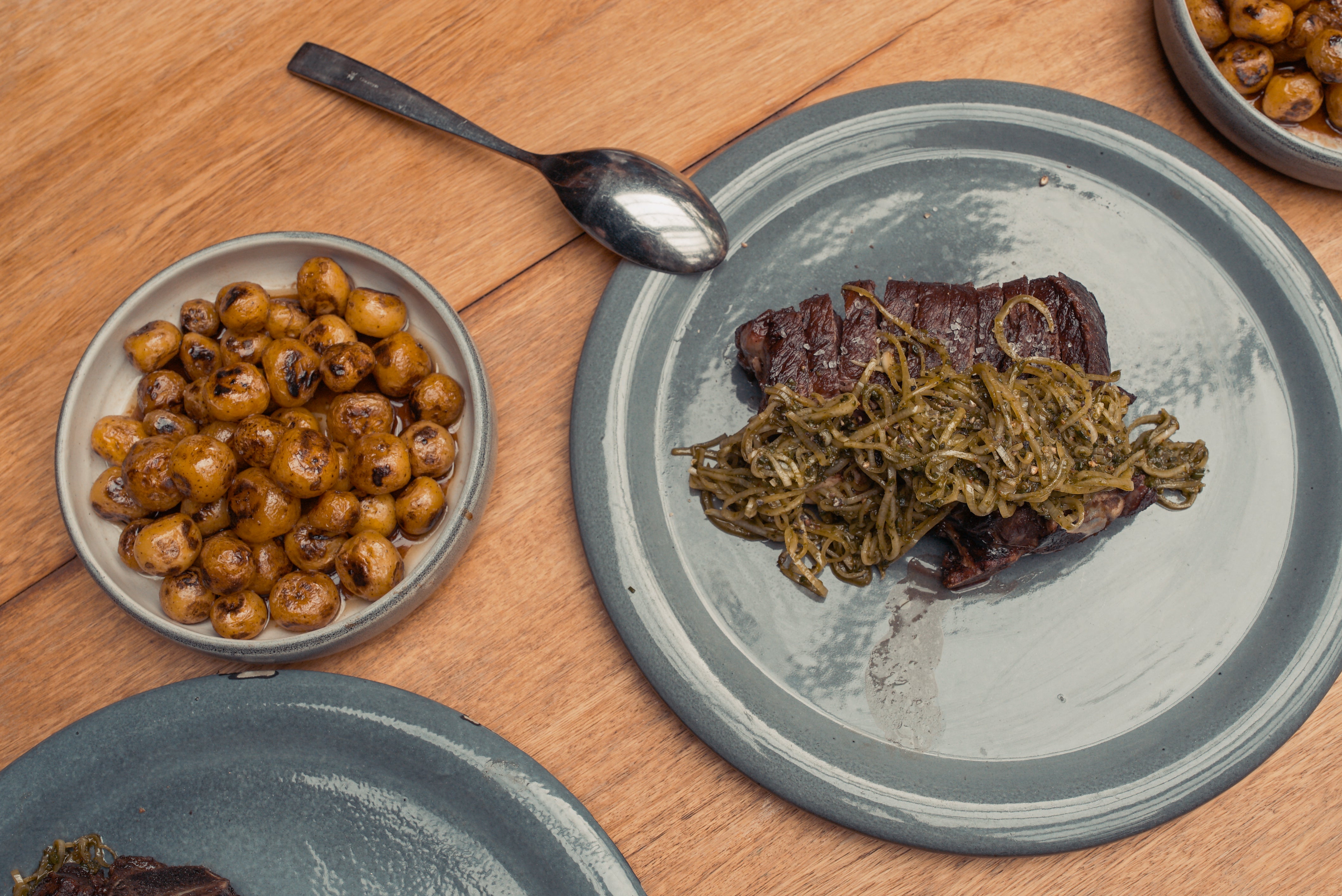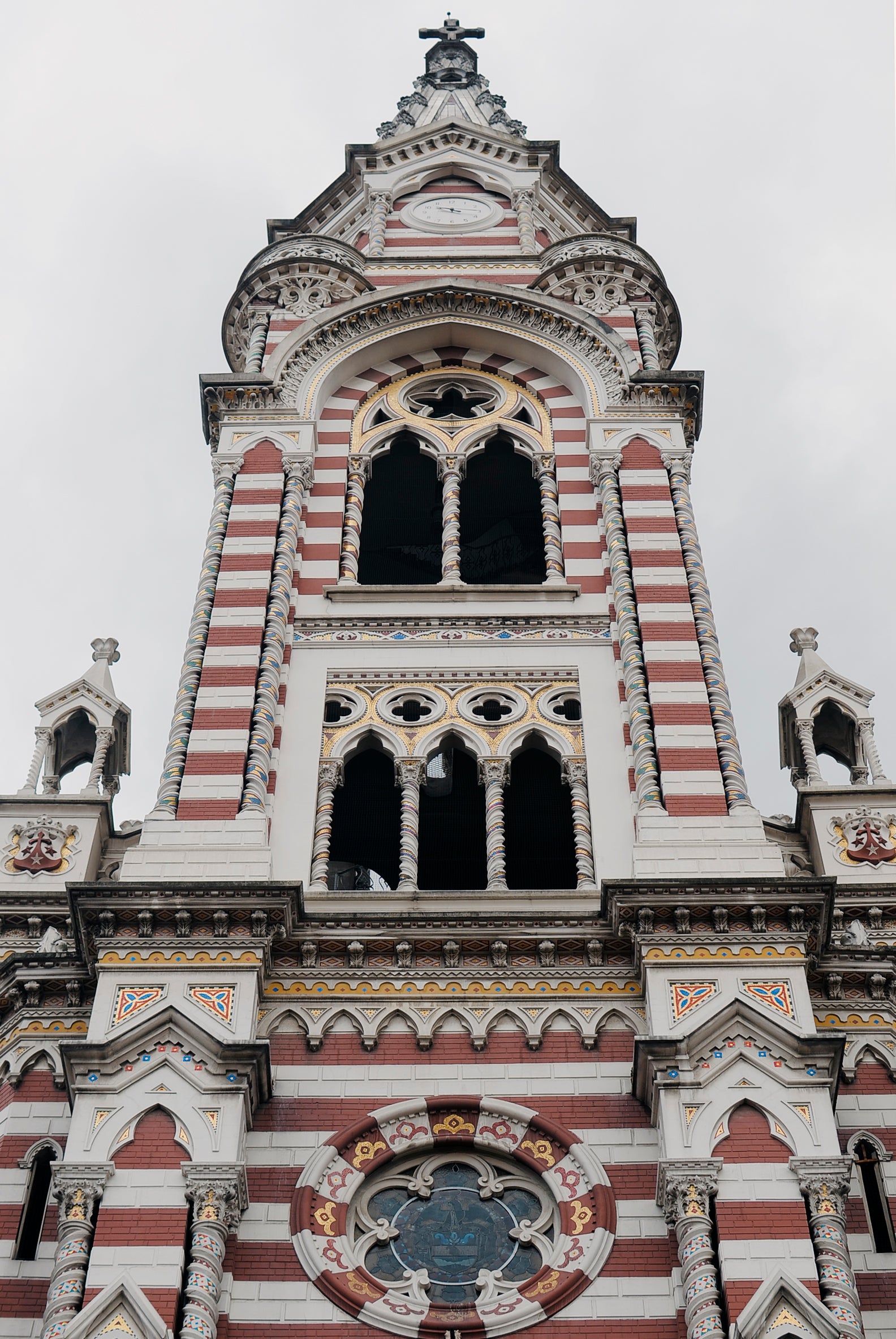
Once regarded as one of the world’s most dangerous countries, Colombia has seemingly turned a corner. Home to vibrant cities, sprawling jungle and idyllic Caribbean coastline, its capital, Bogota, is at the forefront of this shift from shock-headline magnet to must-visit destination.
Located in Colombia’s deep interior, and built on a high plateau more than 8,000ft above sea level, the city has a relatively cool climate that remains similar all year round (temperatures reach an average of 15C even in the hot season, something to bear in mind when packing). Rich in history, Bogota is a melting pot of culture, with Spanish, Mexican and British influences showing in its architecture, cuisine, and even the way the locals carry themselves.
Its northern neighbourhoods – Chapinero, La Candelaria and Santa Fe – thrum with tourists. Chapinero is a perfect base to set up camp: as well as being renowned for its nightlife, student population, shopping centres and LGBT+ population, it’s well connected by public transport, making it a popular first stop for first timers.

What to do
Shop at Paloquemao market
For an authentic Colombian culinary and shopping experience, head down to Paloquemao market. With hundreds of stalls selling flowers, fruit, coffee, meat and fish, it’s the perfect place for a quick spot of lunch while taking in the sheer scale of what Colombia produces. Sniff out vendors nestled among its narrow passages, serving everything from tropical indigenous fruit, such as maracuya, to hearty street-food snacks like arepas (cornflour tortillas filled with meat, veg or even chocolate). As in most markets around the world, never accept the first price – Paloquemao is a great place to flex your haggling skills. Start with half of what you’d happily pay, and work up from there.
Visit its prettiest neighbourhoods
Bogota is a beautiful place steeped in history, with stories at every turn. It’s worth putting aside time to just wander and explore. Peruse the graffiti-adorned streets of La Candelaria – the city’s thriving, bohemian student and arts district. Take a stroll along the eucalyptus-lined avenues of the affluent Chico district. And visit Bolivar Square to learn about the history of Bogota and wider Colombia. Rodrigo of ToursByLocals is a Bogota native and a bastion of knowledge, who can also point out the best local coffee shops.
Drink coffee
Colombia is famous for its coffee, and with the city of Armenia – centre of the country’s coffee-growing scene – not too far away, Bogota has some of the best java on the planet. Head to Cafe de la Fonda on your way to Paloquemao market for some of the best; not only is the coffee delicious, but what looks like an unassuming family-run cafe is actually a fully functioning “bean to cup” coffee plant. Ask nicely and they’ll let you “backstage” to see the entire process.

Where to stay
In the heart of Chapinero, a stone’s throw from some excellent bars and restaurants, the recently opened NH Collection Hotel strikes a good balance between affordable and luxury. Selling points include an impressive breakfast, comfortable kingsize beds, cable TV, a 24-hour reception, and security. Doubles from £70, B&B. nh-collection.com
Also conveniently located within first-timer-favourite area Chapinero, charming and luxurious Casa Legado has spacious double rooms, a bar and a shared lounge, plus a beautifully designed garden where you can eat, drink and relax. Take advantage of the free bike hire service as a convenient way to get around, too. Doubles from £140, room only. casalegadobogota.com

Where to eat
El Chato’s head chef and owner, Alvaro Clavijo, spent years working, learning and honing his trade across Europe before returning to his homeland. He’s created a restaurant that takes traditional Colombian cuisine and gives it a 21st-century spin. Most popular are the chicken hearts with potatoes, but the meringue and lulo (a tomato-like fruit with a citrussy taste) dessert is one of the best in Bogota.
For a quick pick-me-up to help you refuel, look no further than Renata Tacos. A cheap and cheerful chain of taquerias dotted around the popular Chapinero neighbourhood, their chorizo and cheese tacos should be paired with a Corona beer for a winning combo.
Part restaurant, part nightclub, Andres Carne is an hour’s drive from Bogota, but truly worth the detour. From the moment you enter, you’re surrounded by an ambience, colourful decor, and music designed to bring Colombian culture to life. Adorned with giant neon signs, brash artwork and quirky decor, it wouldn’t be out of place in the most “hipster” of neighbourhoods; once inside, musicians, magicians and dancers provide tableside entertainment, darting from group to group while you eat. Go for the spicy sausage or pork ribs with traditional Colombian breads and cheeses – though as the “Carne” in the name suggests, veggie options are limited.
Where to drink
If you’re after fancy cocktails with a uniquely Colombian twist, Huerta Cocteleria in the heart of Chapinero will tick all your boxes. Using local produce, with a focus on sustainability, it combines a low-key, rustic look with a level of opulence that feels like a special occasion any day of the week. The food is pretty great, too.
The colourful, winding roads of the La Candelaria quarter are a great place to bar-hop and meet the locals. There’s often live music, so listen out along the little alleys; Quiebra Canto is a particular favourite, with live music every Wednesday. And be sure to try some chicha, an ancient, corn-based fermented drink sold on the streets here – it’s sweet, alcoholic, and comes in different flavours.
Known to locals as “Zona T” for the shape of its main connecting streets, Zona Rosa is the main nightlife and bar district. Here you’ll find a number of bars and clubs playing everything from pop music to salsa until the early hours. BBC (Bogota Beer Company) provides great locally brewed craft beers, while Presea, the only Reggaeton club in the area, is perfect for a dance.
Architectural highlight
The impact of Christianity in Bogota is plain to see, with more than 1,500 churches throughout the city, dating back hundreds of years. One of the most impressive is Santuario Nuestra Senora del Carmen, a short walk away from Bolivar Square. Although not the biggest house of worship in town – that accolade goes to the Primatial Cathedral of Bogota – it’s certainly the most beautiful, with an ornate candy-striped exterior and richly patterned flooring. Take in the giant altar inside, as well as intricately detailed stained-glass windows and hundreds of statues protruding from the walls and crevices.

Nuts and bolts
What currency do I need?
Colombian Pesos.
What language do they speak?
Spanish, but English is widely spoken.
Should I tip?
Around 10-20 per cent seems to be the going rate.
What’s the time difference?
Five hours behind GMT.
How should I get around?
You can get far on foot; however, when travelling across the city, private taxis are recommended both from a safety and a convenience perspective.
What’s the best view?
A hike or cable car to the top of Monserrate Hill will provide spectacular views of the city. (If hiking, travel in groups and in daylight.)
Insider tip?
Fill up on street food; culinary delights can be found on every corner, with something for everyone. Arepas are a must.
Is it safe to explore?
Bogota remains an expansive mass of people and architecture, affluence and urban decay ‒ therefore, as with any major city, an element of caution is always advisable. Although far safer than it once was, it’s best to explore on foot by daylight, take registered taxis at night, and avoid areas such as Ciudad Bolivar and San Cristobal towards the south – both have high crime rates, with muggings, car theft and pickpocketing.
Getting there
Trying to fly less?
Occasional freighter ships go from European ports reachable by train (Le Havre, Antwerp, Rotterdam) to Cartagena, Colombia. From here it’s a 20-hour bus to Bogota.
Fine with flying?
Colombia’s flag carrier, Avianca, flies from London Heathrow to Bogota’s El Dorado international airport every day.







